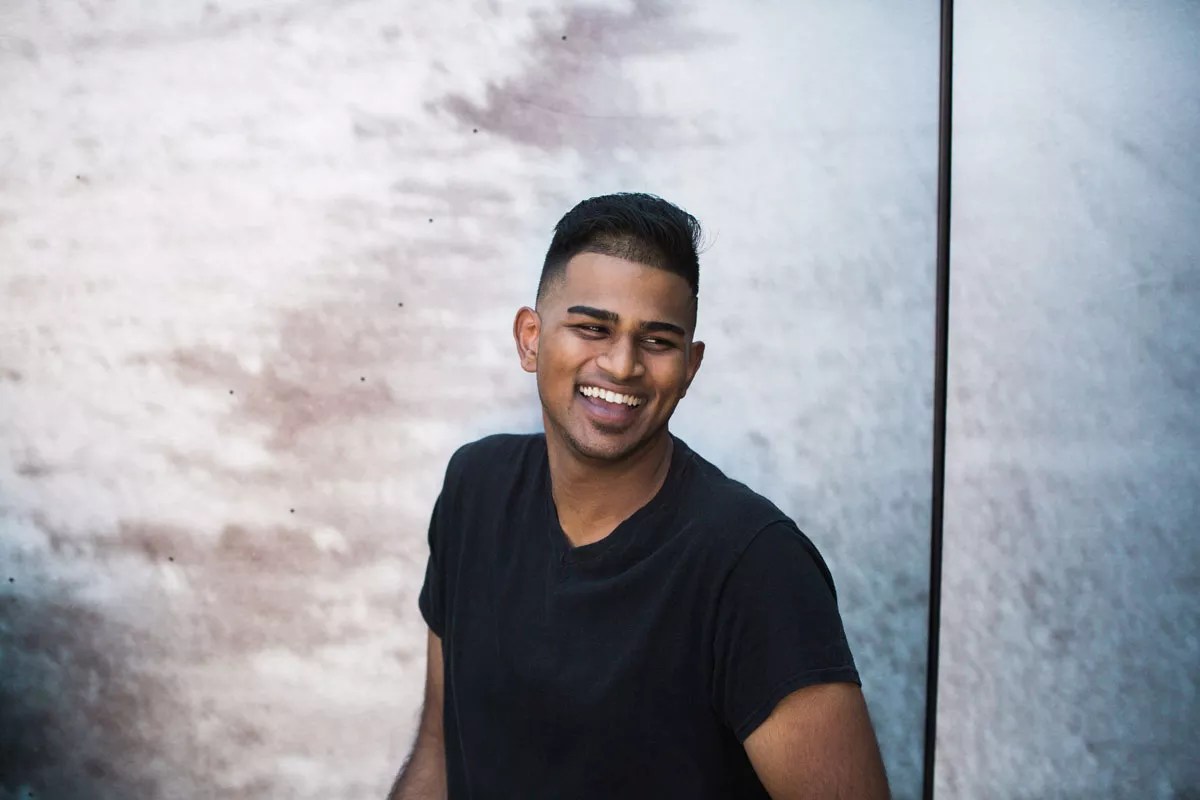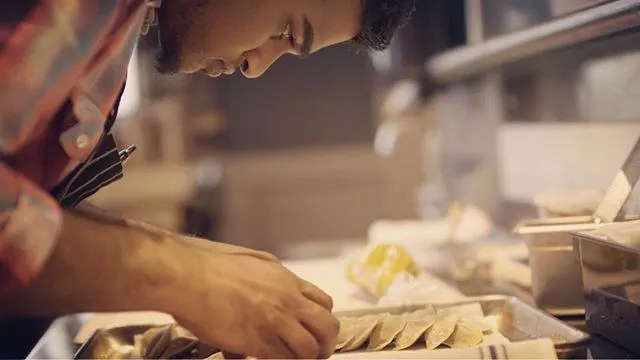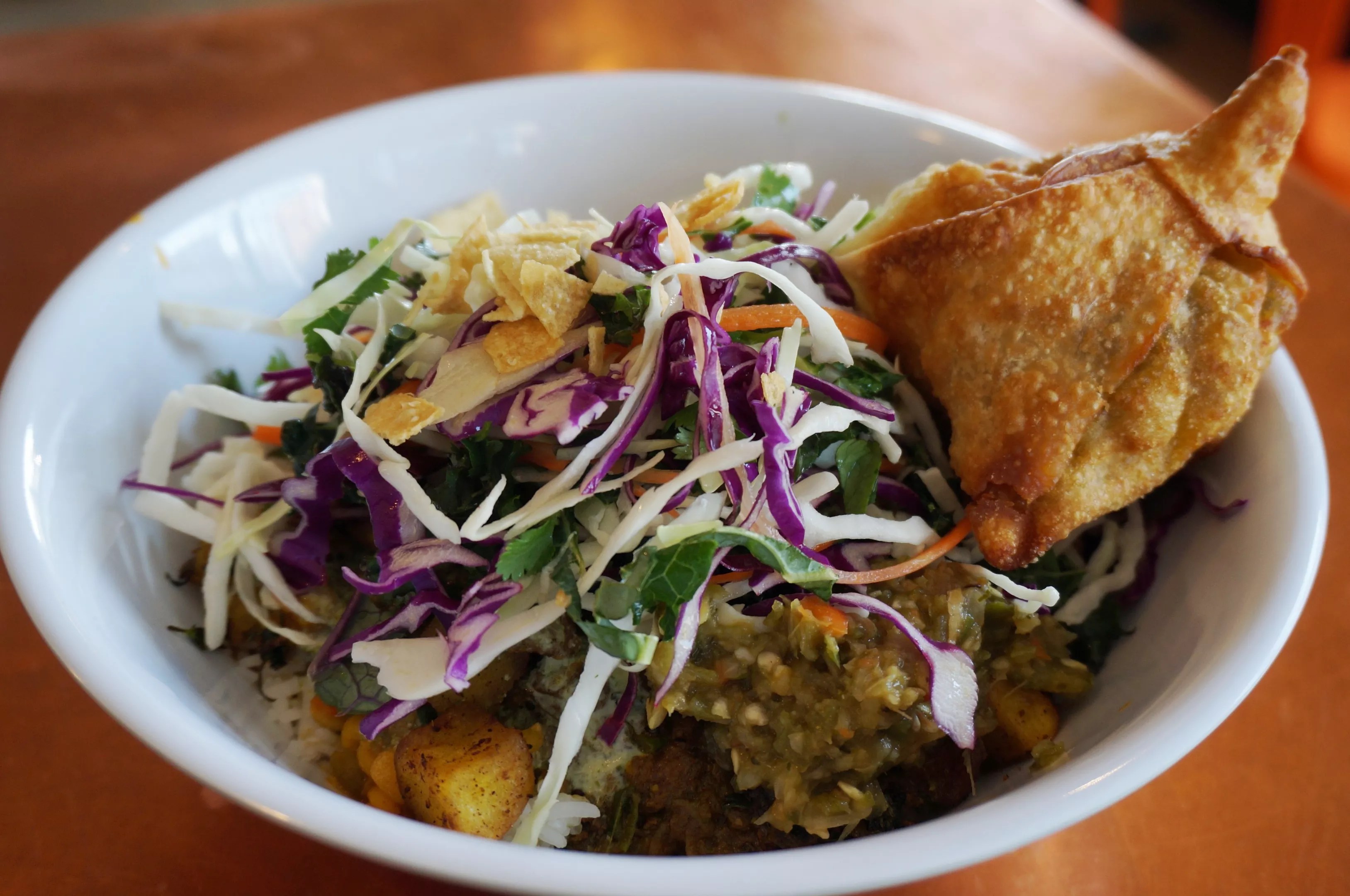
Jenni Summer

Audio By Carbonatix
Dave Hadley made a splash earlier this year when he went on Chopped and, drawing from the southern Indian cooking he’d grown up eating, bested his East Coast competitors. Hadley was sous-chef at the Preservery at the time, a job he’d landed after working his way through Acorn and Biju’s Little Curry Shop, and after a brief foray into the cannabis edibles industry. Now Hadley has set his sights on bringing what he calls progressive Indian cuisine to Denver, and he’s about to set off for a stint at Gaggan, a top-ranked fine-dining Indian restaurant in Thailand. Before he left town, we caught up with Hadley to talk about what he hopes to learn, the Indian food of his youth, and why he’s excited to have his butt kicked in the kitchen.
Westword: So you’re about to embark on a big journey.
Dave Hadley: I’m going to Gaggan for three months. I’m going to get my butt kicked, and I’m excited for it. I need it.
And this is your first major trip abroad since you were a teenager, right?
Yes. I was watching Chef’s Table, and one day I thought, why are you so scared? Why don’t you go travel? That’s what’s going to make you good. That was the start of the story. Sometimes it takes a push for people to do what they love and bring it together. It took me a year to figure out what I needed. I’ve never been to Asia; I have yet to visit my homeland of India, and I’m doing that in January. Most Denver chefs don’t get this opportunity; the mindset here isn’t for that.
Why Gaggan? Why Thailand?
Gaggan Anand [Gaggan’s chef and owner] is the only Indian doing it. The end. Gaggan is globally recognized as the number-seven restaurant in the world, and he does progressive Indian food. There’s no other choice; I’ve got to go there. I could have gone to London – other Indians are doing it big in London – but I wanted to do fine-dining progressive Indian. Gaggan will help hone me and my style more. I think that place is also going to teach me how to communicate directly with people. I think most young cooks like myself, we need to do this. I’m the only American kid going at that time, but I’m also Indian. That’s what I eat. It’s the best. And Thailand is king of taking your five senses and taking all the flavors you need in one bite – spicy, salty, bitter, sweet, sour – and making food that way. No question that that’s where I would learn how to do that correctly. It’s not the same unless you go and learn the technique. It’s not the same as watching someone do street food on YouTube and being mesmerized. I want to learn from them side by side.

chefdavehadley.com
When you say progressive Indian, what do you mean?
Most people have an idea of Indian food being sloppy or dirty: The color is muddled, and there are exotic flavors that people either dislike or love. Gaggan studied French technique, and he took the cleanliness and the concept and he thought progressively. There’s thought behind each part of the food. My mom cooks up chicken curry, chapatis, rice, and it’s the best thing ever. But how do you take that and tweak the spices to balance it?
It seems to me that Indian food is fairly misunderstood in America in general. You’re from the south; could you talk a bit about how the food you grew up eating differs from the northern Indian food that tends to be prevalent in U.S. Indian restaurants?
Yeah, for instance, chicken tikka masala is a British dish. It’s not Indian. It’s basically ketchup and curry. And there are many types of bread made; naan is not the only one. Indian food isn’t always spicy, and it’s not always fatty – it depends on the type of oil. Northern people eat a little more rich. I come from the southernmost part of Kerala, where there’s a lot of coconut and tropical fruit and vegetables and a lot of seafood. We also eat beef: The Christians came up from the south. In Goa, there’s a different type of spice level, and a lot of lamb and goat.
Talk a bit about your own history with food. Did your childhood ignite an interest in cooking?
I come from a family of six, so we were always feeding big. My parents have a really big hospitality background – that’s just the way they are. My dad is party-like; he wants to have everyone over. My mom cooks for twenty when there are only four people. So sitting down to dinner was always part of my life. I didn’t think food was going to be my thing. I wanted to play basketball. As I got older, I connected with different family members. My grandma lived with me for almost my whole life, and she cooked. My house always had that Indian smell of fried fish, ghee, spices; she made things by hand. As I got older, I realized I was pretty good at knowing what they were making. I wanted to take it to the next level.
So how did you get from there to Denver restaurants?
CIA [the Culinary Institute of America at Hyde Park] was really awesome. I didn’t take my first or second year seriously. It took until my trip to Spain, my junior or senior year, to grasp the idea of what I was doing. When I was fourteen or fifteen, I traveled to Ecuador for three months – it was for a church service project – and I cooked with the mothers there. In Spain, I realized I was learning about food and figuring out how it worked back into Indian food. Cooking fish in Ecuador is the same as Spain and India, but with different spices and tools. I did my internship at 689 in Carbondale with Mark Fischer. It was the best restaurant because of locality; the idea of Colorado was in the restaurant. We were raising and killing chickens and watching the produce change. I saw the Paonia peaches for real – I got to go to the tree and pick them. Mark told me, “The Roaring Fork Valley is too small for you; you should head to Denver.” A few years ago, I staged at ChoLon. I loved Denver cuisine. After senior year, I came here and worked at Acorn after they first opened. I met Russell Stippich [now head chef at the Nickel] and Sam Charles and Marcus Eng [now at the Way Back], who have gone to all these great Denver places. I got my butt kicked by them and learned it was more about community.

Masala beef at Biju’s Little Curry Shop.
Mark Antonation
And eventually you wound up with Biju Thomas at Biju’s Little Curry Shop.
My buddy opened a concentrate company. He said, “Hey, I have oil, you know how to make edibles, let’s do this.” So I quit Acorn and stayed there for a year. But I missed the kitchen. I needed to get back to the food scene. Nocturne was opening, and Dustin Beckner, who is now at Edible Beats, got me a gig at opening. Biju’s was opening in September 2014. So I worked part-time at Nocturne and part-time at Biju’s. Eventually I jumped over to Biju’s – this is what I love. I love teaching people about my food, the bases and the curry. We were very tight. Biju’s been my mentor since he opened.
How did winning Chopped impact your career?
It was the most nerve-racking experience. You’re on TV, and you’re trying to do it for the town you’re from. Winning helped me build my confidence in the food I like to do; I heard what works, and the things I tried to do when I had thirty minutes ended up being well liked. It gave me confidence. It created a following: People came to the Preservery from all around the country because they wanted to eat my food. Some of it focused on my cannabis experience; I didn’t cook with weed on the show, but that would have been sick. It was cool to hear what judges had to say about that and to talk about what it’s doing for the culture. It’s a normal thing, a normal industry that pays better than some of the jobs in the food industry.
What do you have planned for when you come back?
I’m planning pop-ups, and cool stuff to get my brand out – I don’t have that yet. Maybe I don’t do a twenty-dish menu, maybe it’s seasonal. Maybe I’ll start with compressed watermelon and cumin seed – that’s old-school Indian food; no one eats that here. How do I introduce that? How do I show people that Indian curry can come looking like a Michelin-starred dish? How do I show them that we’re not trying to kill you with the spice level? I’m going to do a goat curry when I come back, and I think people are going to love it. I’m excited to see what happens.